Baobab Tree
- October 11, 2023
- 1 comment
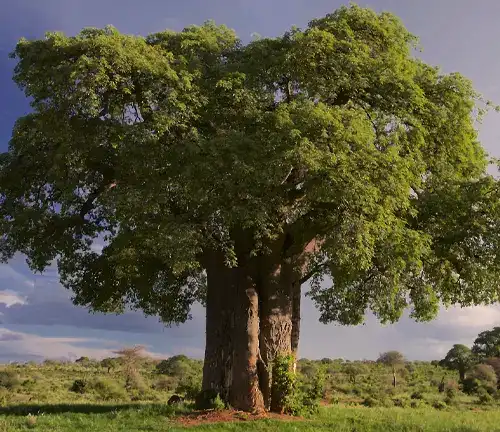
The Baobab tree, hailed as the “Tree of Life,” is a botanical wonder with a rich history spanning multiple continents. Primarily found in Africa, Australia, and the Middle East, these trees belong to the Adansonia genus and are revered for their unique, unmistakable appearance. The most iconic feature of the Baobab is its colossal trunk, which takes on a swollen, bulbous shape, capable of storing copious amounts of water. This adaptation allows the Baobab to thrive in arid and drought-prone environments, making it a symbol of resilience in the face of adversity.
Characterized by smooth, pale gray bark and gnarled branches that sprawl like capillaries against the sky, the Baobab’s silhouette is both imposing and enchanting. The leaves, which resemble compound hands, add to the tree’s distinctive charm. Beyond its aesthetic appeal, the Baobab tree serves a vital ecological role. Often referred to as the “Upside-Down Tree” due to the appearance of its branches resembling roots, it provides sustenance to both humans and wildlife. The large, pendulous fruits contain a powdery pulp that is not only nutrient-rich but also packed with vitamin C and antioxidants, making them a valuable source of nutrition in regions where food resources are scarce.
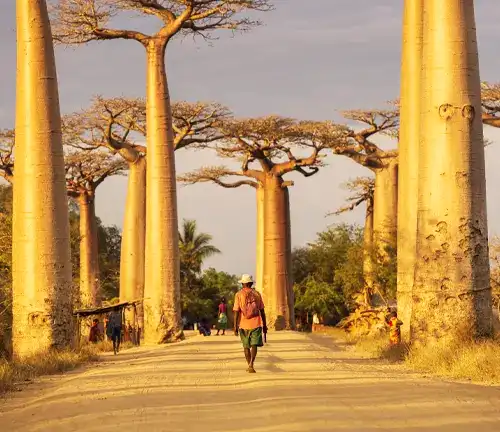
Beyond its ecological significance, the Baobab holds cultural and spiritual importance in many societies. Its longevity, with some trees living for thousands of years, imbues it with an aura of timelessness and wisdom. Various communities attach symbolic meanings to these ancient giants, seeing them as repositories of ancient knowledge and guardians of the land. The Baobab tree, with its ability to adapt to challenging conditions and sustain life in its surroundings, stands as a powerful emblem of the interconnectedness between nature and the communities that coexist with it. Whether admired for its striking silhouette, valued for its nutritional contributions, or venerated for its cultural symbolism, the Baobab tree remains an enduring symbol of life’s tenacity in diverse landscapes.
| Characteristic | Description |
|---|---|
| Common Names | Baobab Tree, Tree of Life, Upside-Down Tree |
| Scientific Name | Adansonia |
| Fruit Shape | Capsule or gourd-like, up to 30 cm (12 inches) long |
| Native Regions | Africa, Australia, Middle East |
| Height | 5 to 30 m (20 to 100 ft) |
| Growth rate | Slow |
| Sunlight requirements | Full sun |
| Soil type | Well-drained, sandy soil |
| Water requirements | Drought-tolerant, but benefits from regular watering during the growing season |
| Lifespan | live for up to 5,000 years |
| Plant type | Deciduous tree |
| Hardiness zones | 10-12 |
| Family | Malvaceae (previously Bombacaceae) |
A Brief History
The Baobab tree, with its imposing and iconic silhouette, boasts a rich history entwined with the landscapes it inhabits. Indigenous to Africa, Australia, and the Middle East, the Baobab has borne witness to the ebb and flow of civilizations over centuries. Revered in local folklore and utilized by ancient communities for its myriad benefits, the Baobab’s history reflects the deep connection between nature and humanity.
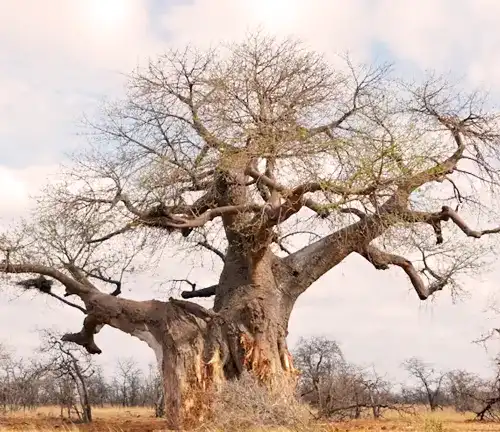
Color/Appearance
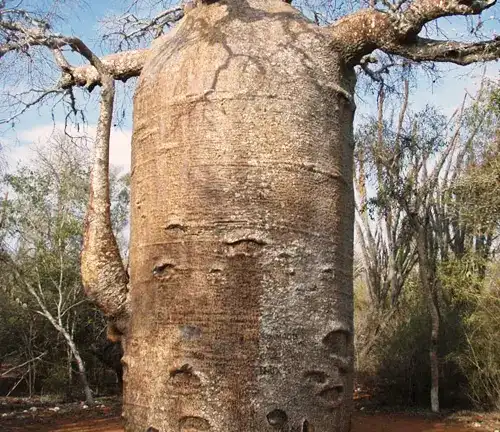
The Baobab’s distinctive aesthetic begins with its massive, swollen trunk, a feature that not only defines its appearance but also serves a crucial purpose. The smooth, pale gray bark creates an arresting visual contrast against the stout and gnarled branches that extend outward like nature’s reaching fingers. The leaves, resembling compound hands, dance in the wind, completing the tree’s unique and captivating palette.
Unique Features
What sets the Baobab apart are its unique features, particularly the ability of its trunk to store copious amounts of water. This adaptation allows the tree to endure the challenges of arid climates, making it a symbol of resilience in the natural world. Its majestic stature and remarkable longevity, with some trees believed to live for thousands of years, contribute to the sense of timelessness that surrounds the Baobab.
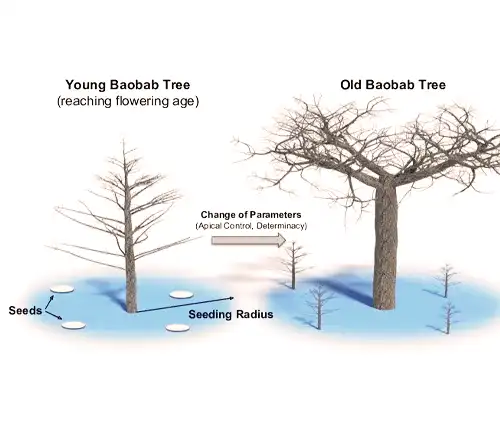
Pros and Cons
Pros
- Nutritional Richness: Baobab fruits are a rich source of nutrients, containing vitamin C, antioxidants, and essential minerals. The pulp is used in various regions for its potential health benefits.
- Water Storage Adaptation: The Baobab’s ability to store large amounts of water in its trunk allows it to survive in arid environments, contributing to the ecosystem’s resilience.
- Ecological Importance: Baobab trees play a crucial role in supporting biodiversity by providing habitat and sustenance for various wildlife species. Fallen leaves contribute to nutrient-rich soils.
- Cultural Significance: The Baobab holds deep cultural and spiritual significance in many societies, often regarded as a symbol of wisdom, longevity, and protection.
- Drought Resistance: Adapted to withstand drought conditions, Baobabs contribute to soil conservation and are valuable in combating desertification.
Cons
- Slow Growth: Baobab trees are notoriously slow growers, and it can take several decades for them to reach maturity. This slow growth rate may limit their use in certain commercial applications.
- Limited Timber Use: The wood of the Baobab tree, while durable, is spongy and fibrous, making it less suitable for traditional timber uses. This limits its economic value in the timber industry.
- Vulnerability to Human Activities: Baobab trees face threats from habitat loss due to agricultural expansion, logging, and land development. Human activities can disrupt their ecosystems and pose risks to their survival.
- Climate Sensitivity: While Baobabs are adapted to harsh climates, they are not immune to the impacts of climate change. Altered precipitation patterns and temperature extremes can affect their growth and distribution.
- Limited Commercial Exploitation: Despite its nutritional and cultural value, the Baobab has not been fully exploited for commercial purposes. Harnessing its full economic potential requires sustainable harvesting practices and market development.
Ecological Importance
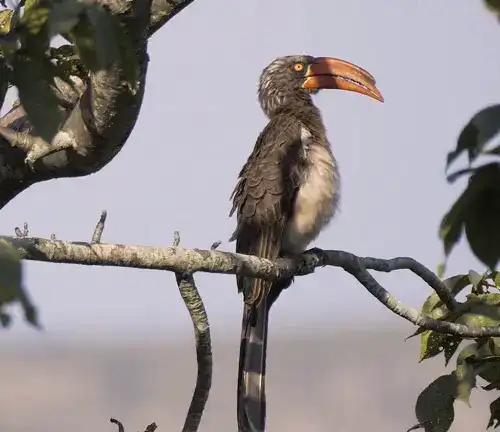
Beyond its visual grandeur, the Baobab plays a pivotal role in the ecosystems it inhabits. The large, pendulous fruits, with their powdery pulp, serve as a nutritional powerhouse for both wildlife and local communities. The tree’s presence is crucial in supporting biodiversity and maintaining the delicate balance of its native habitats.
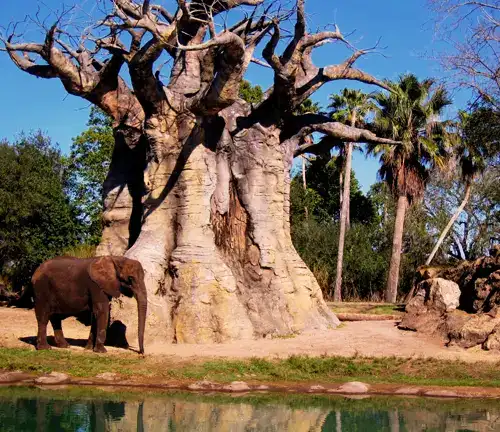
Adaptation and Resilience
The Baobab’s adaptation and resilience are key to its survival. Thriving in some of the harshest environments on Earth, the tree has evolved to withstand drought and store water efficiently. Its ability to endure adverse conditions positions it as a symbol of strength and adaptability.
Cultivation and Care
Cultivating the Baobab requires an understanding of its native environment. While it can tolerate a range of conditions, including poor soils, well-drained locations in tropical and subtropical regions are optimal for its growth. Patience is a virtue when cultivating Baobabs, as they are slow growers, but the rewards are monumental, both in terms of ecological impact and cultural significance.
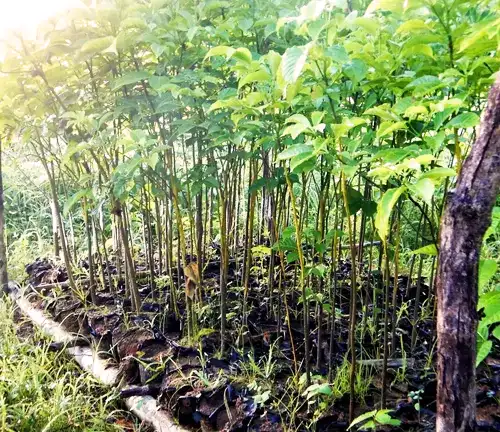
Life Cycle
The life cycle of the Baobab is a testament to the tree’s enduring spirit. From the germination of seeds to the slow growth into towering giants, the Baobab’s life cycle spans centuries. Its reproductive efforts, marked by the production of large fruits and the dispersal of seeds, contribute to the perpetuation of its lineage.
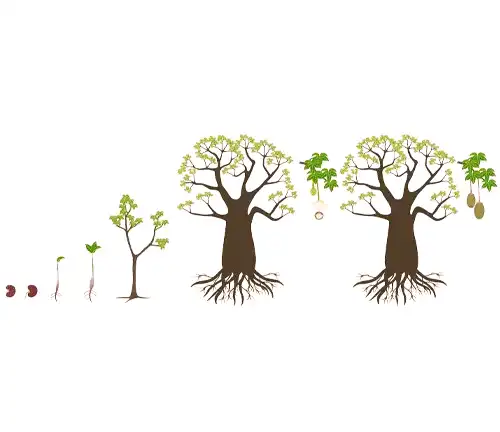
Cultural and Historical Significance
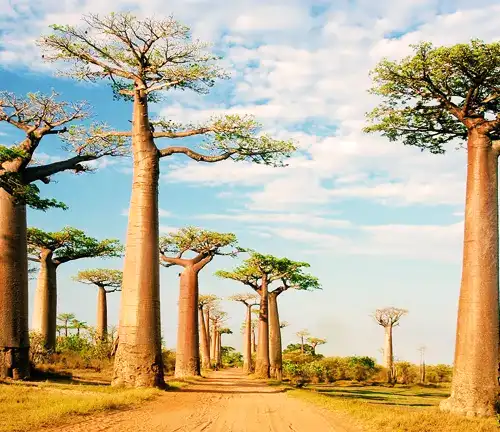
The Baobab’s cultural and historical significance is deeply rooted in the traditions of the communities that have coexisted with it for generations. Used for crafting tools, providing shelter, and featuring prominently in local myths, the Baobab is a symbol of wisdom, strength, and connection to the land.
Wood Products and Applications
While the wood of the Baobab is not commonly used for large-scale timber, various parts find applications in local communities. The bark, leaves, and fruits are utilized in traditional medicine, and the wood, though spongy, is occasionally used for crafting tools and small items. The versatile nature of the Baobab contributes to its importance in local economies.


Other Uses
Beyond its applications in traditional medicine and crafts, the Baobab has found modern uses. The fruit’s pulp, rich in nutrients and antioxidants, is processed into a powder that has gained popularity as a superfood. Additionally, the tree’s distinct silhouette makes it a favored choice in landscaping, enhancing the aesthetic appeal of gardens and parks.
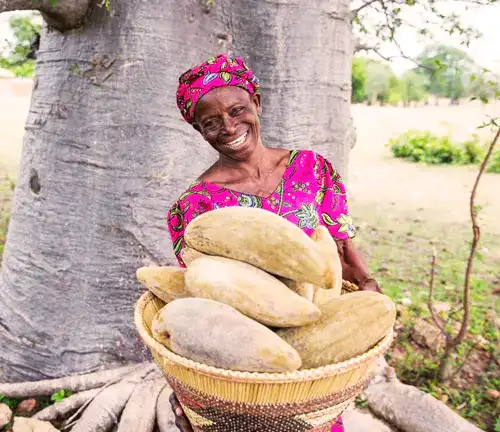
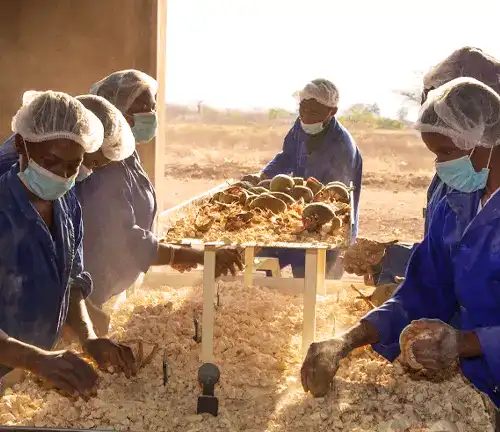

Threats and Conservation
Despite its resilience, the Baobab faces threats, including habitat loss, climate change, and unsustainable harvesting. Conservation efforts are vital to safeguard the continued existence of these ancient giants. Balancing human needs with the preservation of natural habitats is crucial for the sustained health of Baobab populations.
Benefits
The benefits of the Baobab extend far beyond its visual splendor. Its fruits, rich in nutrients, contribute to food security in regions where it grows. The tree’s water-storing ability makes it a valuable resource in combating desertification and promoting soil health. Its role in traditional medicine further underscores its significance in local communities.
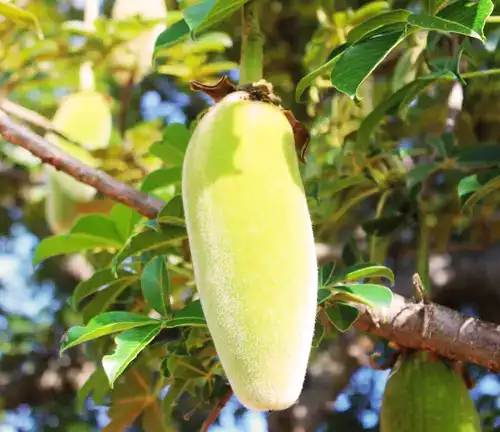
Popular Beliefs
In various cultures, the Baobab is surrounded by popular beliefs and myths. Some communities consider it a sacred tree, a guardian of the land, while others associate it with protection and spiritual significance. The Baobab’s massive trunk and enduring presence often lead to the belief that it holds ancient wisdom and a connection to the divine.
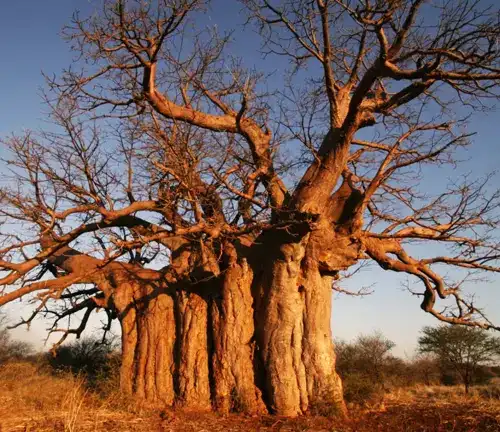
Common Species
1. Adansonia digitata (African Baobab)
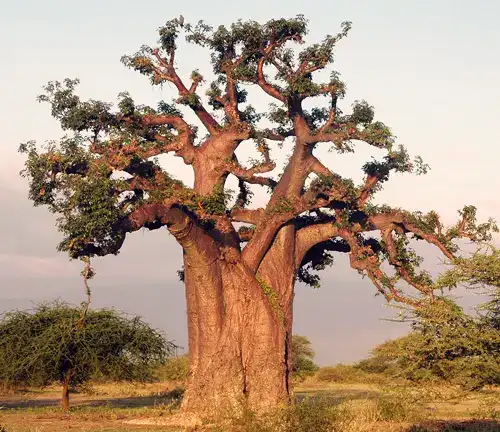
Distribution: Found in various parts of Africa, including sub-Saharan Africa.
Features: Known for its iconic appearance with a massive trunk and distinctive branches. Produces large, pendulous fruits containing a powdery pulp.
2. Adansonia grandidieri (Grandidier’s Baobab)
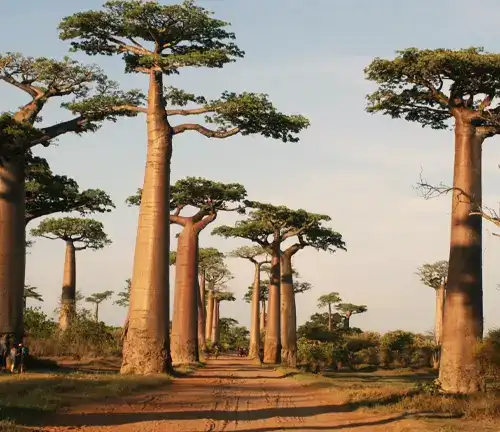
Distribution: Native to Madagascar.
Features: Recognizable by its cylindrical trunk and sparse, irregular branches. The trunk often stores water, aiding survival in arid conditions.
3. Adansonia madagascariensis (Madagascar Baobab)

Distribution: Endemic to Madagascar.
Features: Similar in appearance to Adansonia grandidieri, with a bottle-shaped trunk and sparse crown. Plays a vital role in Madagascar’s unique ecosystems.
4. Adansonia suarezensis (Suarez Baobab)
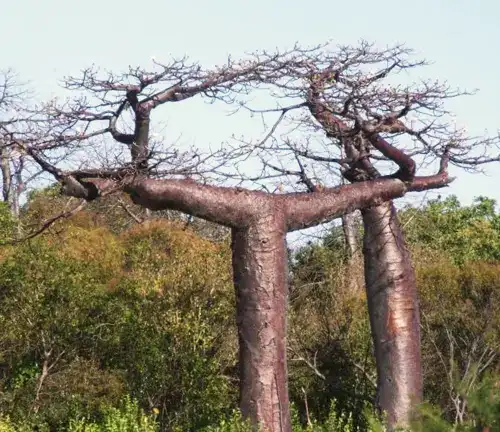
Distribution: Found in the northern regions of Madagascar.
Features: Resembles other Baobab species but has distinctive characteristics. Indigenous people use various parts of this tree for medicinal purposes.
5. Adansonia gregorii (Australian Baobab)
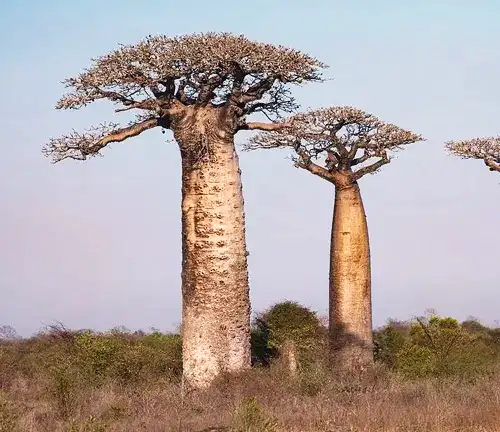
Distribution: Native to north-western Australia.
Features: Smaller than the African Baobab, with a bottle-shaped trunk and sparse branches. Grows in the Kimberley region and is culturally significant to indigenous Australians.
6. Adansonia perrieri (Perrier’s Baobab)
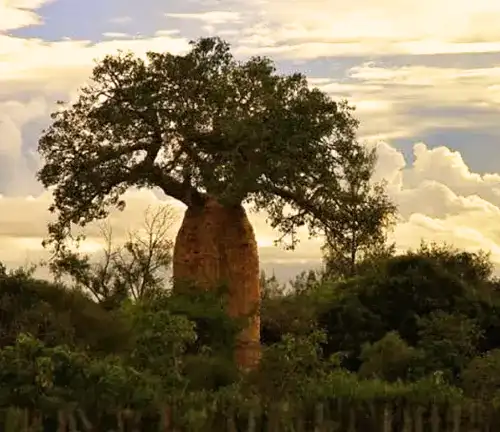
Distribution: Native to Madagascar.
Features: Characterized by a more slender trunk compared to other Baobabs. It has a more delicate appearance and is found in the western part of Madagascar.
7. Adansonia rubrostipa (Fony Baobab)
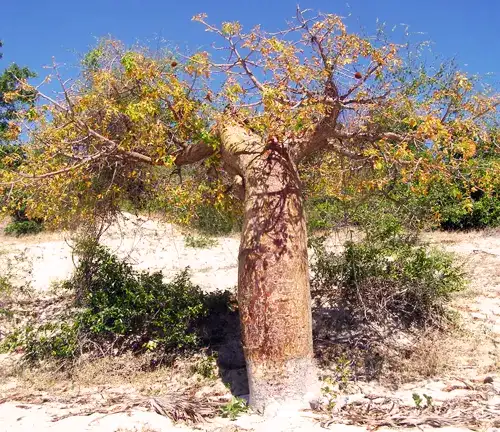
Distribution: Indigenous to Madagascar.
Features: Known for its reddish bark and is part of the diverse Baobab species found on the island.
Conclusion
Baobab tree stands as a symbol of nature’s ingenuity, cultural richness, and ecological importance. Its presence transcends mere aesthetics, reaching into the realms of history, tradition, and sustainability. As we navigate an ever-changing world, the preservation and thoughtful cultivation of the Baobab become not just an environmental concern but a shared responsibility to honor and perpetuate the legacy of this extraordinary tree.
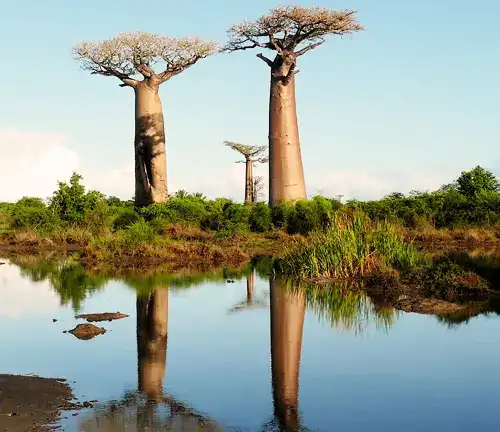
Frequently Asked Questions (FAQs)
- Can you explain the Baobab tree’s peculiar growth pattern, with its branches resembling roots?
The Baobab’s branches often give the appearance of roots sticking out into the sky, leading to its nickname “Upside-Down Tree.” This unique growth adaptation is thought to maximize the tree’s exposure to sunlight and enhance its ability to capture moisture from the air. - Do Baobab trees really hold water in their trunks, and how does this adaptation help them survive in arid regions?
Yes, Baobab trees have a remarkable ability to store large amounts of water in their swollen trunks. This adaptation enables them to endure prolonged periods of drought. During the wet season, the tree stores water, creating a reservoir that sustains it through dry spells when water sources are scarce. - Why are Baobab trees sometimes referred to as the “Tree of Life”?
Baobab trees earned the title “Tree of Life” due to their multifaceted contributions to both ecosystems and human communities. From providing sustenance through nutrient-rich fruits to offering shelter, traditional medicine, and cultural significance, the Baobab’s diverse benefits have led to its symbolic association with life and vitality. - Are there any ancient Baobab trees with historical or cultural significance?
Yes, there are several ancient Baobab trees that hold historical and cultural significance. Notably, the Sunland Baobab in South Africa is estimated to be over 6,000 years old and has served as a natural landmark and gathering place. Many Baobabs are also linked to local myths and traditions, contributing to their cultural importance. - How do Baobab trees contribute to biodiversity beyond providing sustenance?
Baobab trees play a crucial role in supporting biodiversity. Their large, hollow trunks often become nesting sites for birds and shelter for various animals. The fallen leaves contribute to nutrient-rich soils, supporting diverse plant life. The presence of Baobabs enhances the overall health and resilience of the ecosystems they inhabit.
In the tapestry of nature, the Baobab tree stands tall as a symbol of strength and adaptability. From Africa to Australia, each species narrates a tale of resilience. Beyond its imposing stature, the Baobab holds cultural significance, providing sustenance and spiritual connection. Preserving this iconic tree is not just an environmental responsibility but a celebration of the intricate bond between humanity and the natural world.



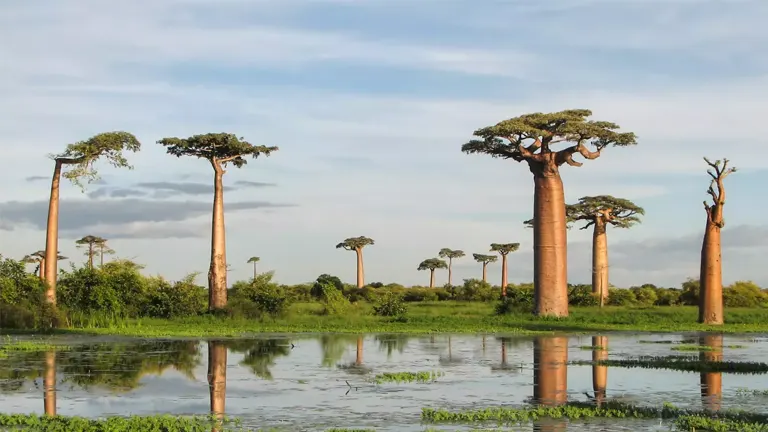
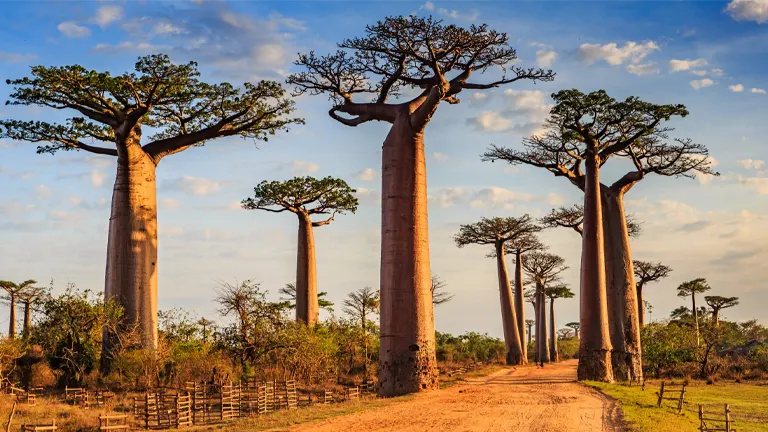
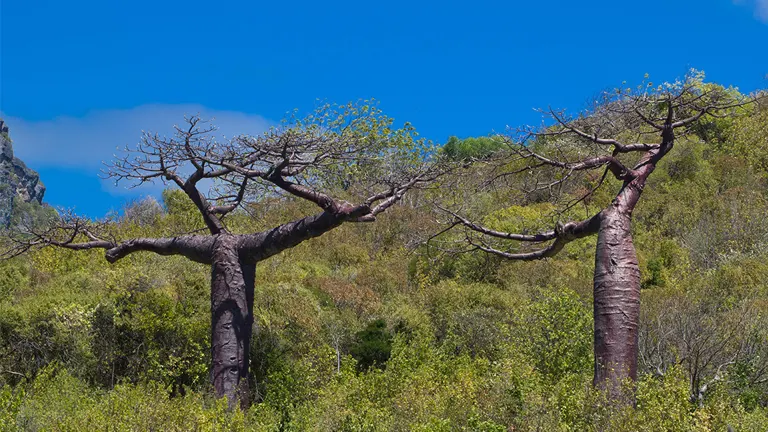
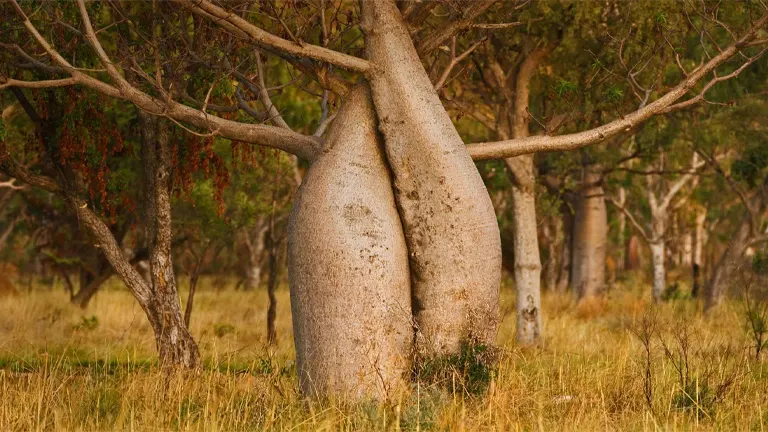
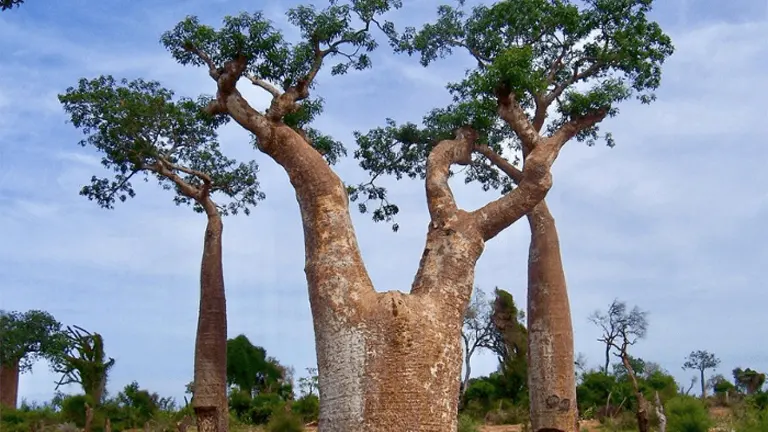
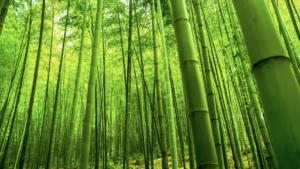
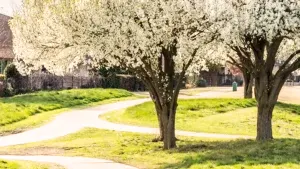
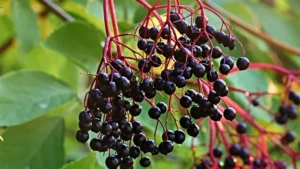
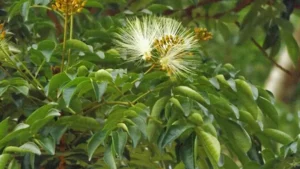

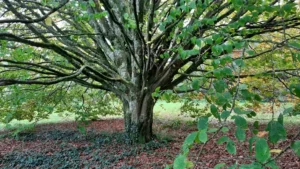
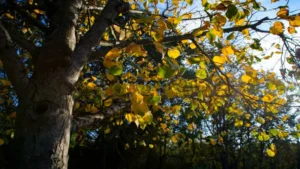
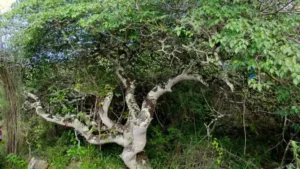
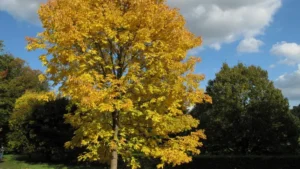

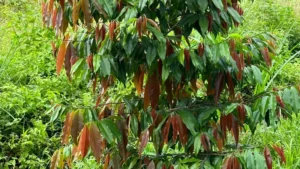
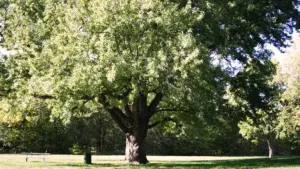
Good video. I would like to find a timelapse video showing the growth of the tree. I know it would be a decades long project and wonder if anyone is doing it.
Jim Kerstetter
March 25, 2024 10:43 pm